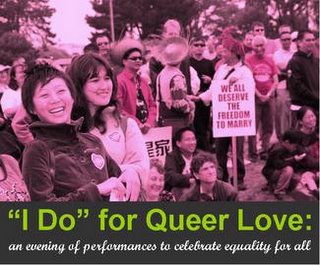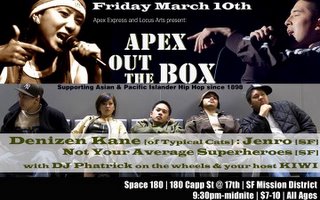
I just heard that Asian American filmmaker Loni Ding passed away. Loni Ding* was an multiple Emmy award winning filmmaker, producer, activist, artist and teacher. She joins the list of distinguished Asian American sheroes and heroes who have passed on in the past year. My condolences to her family and those who love her.
My junior year at Cal, I had the honor of taking Loni Ding's Ethnic Studies class called Documentary Film in Communities of Color. We spent a quarter of the semester in a traditional film studies class and spent the rest of the semester working on our own documentary.
That was a crazy semester with a lot of long nights and weekends filming and editing. It took us forever to figure out how to smuggle our mini dv camera into the Media Resources Center in Moffit Library so we could copy clips from films/ docs to use as b-roll.
Anyway, the first time I met Loni Ding (and pretty much every time I saw her after then), I thought, "Loni Ding is genius and crazy!" Crazy in the best way of course! She embodied life. Loni Ding had so much vibrant spunkiness to her. She knew what she wanted and got it. She knew what she wanted from us as well and had no problem letting us know. Her outlook, her art, and her way of being complexified for me what it could mean to be Asian American.
At the time I took Loni Ding's class, I think was in her early 70s, but you would never know it. We only had 3 clues to her age 1) She always yelled at us to "Stop muttering! I can't hear you! Why do you all mutter?!" But it was really her hearing. I used to wonder, how has she not figured it out yet? 2) She always yelled somewhat because of her hearing and 3) Once my group went to her house for a meeting. It was totally something you would see in the movies. Long shot from the street: Three Asian American college students approach an old house. Trees and plants are growing everywhere. Birds eye angle of the students and house: Students gaze up, look around and wonder, Where is the entrance? Extreme close up: Hand knocking on a door. Medium shot: students look at each other nervously. We hear creaking, squeaky door hinges and a voice off to the right that yells, "What are you doing over there! Come here!" Pan far right to the other side of the house, up some stairs: enter Loni Ding shaking her head at the silly college students.
Thank you Loni Ding for these memories. RIP
Loni Ding on developing her identity as Chinese American and as artist:
"Before I went to Mexico, my whole sense of myself and my esthetic sense of what I liked in shapes and colors in clothing, furniture, sculpture, buildings, anything, was really into WASP culture. I liked gray colors, linear, Gothic shapes and hollow-cheeked people. I wanted to be a hollow-cheeked person, a wispy, tubercular type. Instead I was sturdy, chunky, mesomorphic.
Then I hit Mexico. I just went for the work camp but ended up seeing the murals of Diego Rivera, Orozco, and a lot of countryside of Mexico—the colors of the earth and people. I started to see that all the good people in the Rivera murals were the round, brown people: I saw the orange and the reds, the deep greens and the purples of the culture, and the round bodies painted by Rivera. When they sat down on the little chairs, part of their buttocks would hang over the edge! Very real and tender. The lean, gaunt faces were of Henry Ford, Rockefeller, the Conquistadors—the evil people.
When I came back my tastes had completely turned around. I looked in the mirror and I rather liked this round person that I saw! Everything turned into reds, oranges and brilliant colors. I also looked differently at someone like Eric Sevareid, the news commentator who was a classic WASP type. I used to think that he was the absolute last word. And when Sir Kenneth Clark, in a PBS series, would talk about "Civilization," by which he meant only western European culture—I used to think that this was wonderful.
Well, when I got back I suddenly looked at both of these men with a totally distant eye. I had a skeptical attitude, and they no longer had any power over me. I thought they were quite ordinary."
On why she does her work
"For the problem of absence, the main work is to create presence. My preferred approach is to displace stereotypes by creating vital images of Asian Americans as real human beings, with individual faces, voices, and personal histories that we come to know and care about.
They would not be the Americans whose differences are dissolved in the "melting pot," but people speaking with the distinctive accents and rhythms of their real individual and family histories; neither looking nor sounding like the "typical American."
Authentic images of minorities do not abound. For ourselves too, we have a need for the objectifying record. We think we know what we look and sound like, until we’re surprised or shocked by hearing our actual voices on a tape recorder, or seeing our physical selves in moving images".
-------
*For some reason, I never feel comfortable calling her "Loni", she is always Loni Ding to me!








